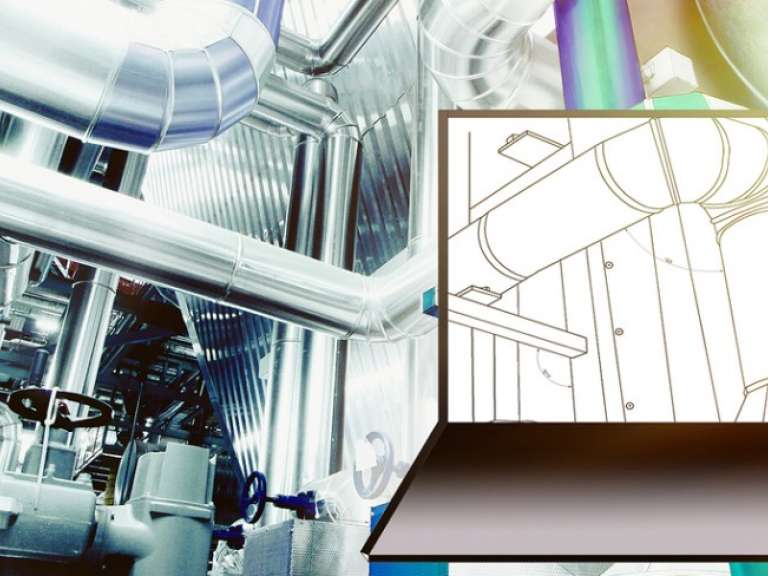The Technology Adoption Life Cycle: What Is Taking Plants So Long To Dive In?
Peter Kelly-DetwilerThe technology adoption life cycle for power plants can be accelerated by addressing all stakeholders.

The technology adoption life cycle has been studied for decades, and it is relatively similar across many industries and sectors of the economy. Some sectors are slower to adopt new technologies than others, and the power industry is lagging.
Tools and instrumentation exist today that allow plant operators to increase safety, cut costs through predictive maintenance, reduce downtime, and enhance economic output. Yet the industry has been relatively slow to open this toolbox. What can asset managers as well as generation executive do to put more advanced, cost-effective tools into the hands of their organization? In order to understand the pace of change, it's helpful to examine the cycle of adoption that affects any new technology.
Irrespective of the specific technology, research, like the study featured in Plant Services, shows that the adoption cycle is similar and involves a number of predictable steps and personality types. These include:
1. The Innovators. This restless group of inventors see a need and set out to address it.
2. Early Adopters. These individuals need to be on the bleeding edge of change and are willing to accept the associated risk or inconvenience.
3. The Early Majority. This crowd has been watching the early adopters to see how the new technology is working out. When they identify a distinct (and relatively low-risk) value proposition, they jump on board. This is a key group to win over, as this is where new technology hits the mainstream.
4. The Late Majority. This describes the large group of cautious skeptics who await the widespread acceptance of the technology before adoption.
5. The Laggards. These are the last on board.
Energy establishments generally fall into the latter categories. What this reluctance likely stems from is the existing culture. For many legitimate reasons, especially the overarching mandate for safety and reliability, the power industry has been conservative and slow to adopt new technologies.
In some cases, this slow pace of adoption may result from a reluctance to change or to put one's career at risk. Just as likely, though, is that it results from a disconnect between the perceived bearers of risk associated with the new technology and the beneficiaries who stand to gain the most from making the change. Put simply, perceived risks associated with technology adoption are often concentrated on a small group of individuals—usually the power plant operators who have to embrace an unfamiliar new world—while the obvious rewards may be more easily identified elsewhere within the company.
The key to addressing this challenge may be simply to explore and identify ways in which all parties win and effectively communicate these advantages across all levels of the organization. The power generation world can benefit from a faster technology adoption life cycle, from the plant operators to the C-Suite.
Improved digitization and predictive maintenance provides the plant operator with an unprecedented view into how safely the plant is running. Predictive maintenance and anomaly detection technologies, such as advanced pattern recognition, give the manager visibility into the safety of operations not only today but also in the future. Additionally, the Industrial Internet of Things approach helps reduce stress by minimizing the potential for costly, unexpected outages. It also reduces the number of false alarms, improves emissions reporting, and eases OSHA compliance.
Meanwhile, the fleet manager enjoys an unprecedented view of performance across the entire portfolio, enabling better decision-making. The job of knowing which plants to run (and how hard) at any given time just got easier. By adopting new technologies, managing a dispatch schedule becomes a lot less difficult.
The trader's role gets easier, as well. He or she gains visibility into which plants have spare capacity on a grid-stressed day when power prices are through the roof. Also, there is less likelihood of being caught in a short position due to an unexpected outage. The trader can also communicate with the fleet manager and plant operator to improve the timing of discretionary outages for maintenance.
Finally, the CFO and CEO enjoy increased profitability overall. Their ability to increase revenue while better managing fuel costs is improved. The chief risk officer sees an improved risk profile in terms of safety and unplanned outages. Company executives also have a better view of what is happening in their facilities. They can identify the critical KPIs and targets to aim for, and the digital tools provide both transparency and the ability to create a data-driven scorecard.
For the power generation industry, the toolbox has improved in recent years. Upgraded asset performance management solutions have the potential to radically change the game. Rapid adoption is not only about technology, though; it's also about people. Thus, it is critical to take the time to understand how employees are measured, what they care about, and how these new tools make their work easier and more productive. When that truly happens, more organizations are likely to adopt these tools, accelerate the technology adoption lifecycle, and create durable, transformational change.
The power plant technology upgrade should start with a healthy infusion of data and analytics, just as the baseball industry has seen in recent years.
Blockchain technology has the potential to change the way we buy and sell power.
Cloud-based digital solutions are empowering asset managers to collect and analyze more data from their plants that improves safety and profitability.